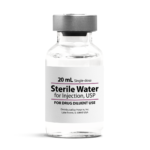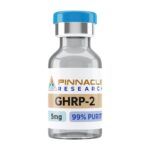About BPC-157
The BPC 157 peptide is a Penta-decapeptide compound containing 15 amino acids. It forms part of the BPC (body protection compound) sequence discovered and extracted from human gastric juice. Clinical studies involving animals have shown that the research compound accelerates the healing processes of wounds, including tendons, muscles and damaged ligaments. The compound is also associated with preventing gastric ulcers and protecting body organs. Please read our brief guide and learn more about the BPC-157.
What is BPC-157
BPC-157 in full stands for Body Protection Compound- 157, derived from BPC (body protection compound). The body protection compound naturally occurs in the human body, particularly in the digestive tract. The primary role of BPC is to ensure the gastronomical track remains protected at all times from damage. It also initiates the healing process of the gastronomical tract and encourages the growth of blood vessels.
The synthetic BPC-157 is a pentadecapeptide comprising 15 amino acids and has been isolated from the larger BPC. It has retained the unique healing properties of BPC, its parent molecule. BPC-157 has been confirmed to have positive effects on the following conditions:
- Blood vessel growth
- Nitric oxide generation
- Hormone regulation (gastrointestinal, nervous system)
- Wound healing
- Immune system function
- The coagulation cascade
- Gene expression
BPC-157 Peptide Chemical Structure
- Sequence: Gly- Glu-Pro-Pro-Pro-Gly-Lys-Pro-Ala-Asp-Asp-Ala-Gly-Leu-Val
- Molecular Formula: C62H98N15O22
- Molecular Weight: 1419.556 g/mol
BPC-157 Peptide Research
The BPC-157 peptide has undergone various research studies to investigate its potential benefits to humans. Below are top studies which have suggested the fantastic benefits of BPC-157 to humans.
Wound Healing
The primary function of the body protection compound in the gastrointestinal tract is maintaining the integrity of the tract’s mucosal barrier. The mucosal barrier ensures the digestive channel is protected from harmful reactions caused by gastric acid, bile, or other gastronomical juices required to digest and absorb food. Fibroblasts play a role in facilitating this duty handled by the BPC. The BPC-157 compound triggers a dose-dependent effect on the fibroblasts, causing them to proliferate and migrate speedily. The primary function of the fibroblasts produced by the body is to help wound healing by laying down the body’s extracellular matrix proteins.
Collateralization and Vascular Growth
The BPC-157 is a very potent angiogenic catalyst that triggers an increase in the endothelial cells’ growth and proliferation rates, which are the body cells that line the blood cells. Trials on rats suffering from ischemia showed the peptide compound triggered a substantial growth rate of the collateral blood vessel. Researchers mainly observed the effects on the gastrointestinal tract. However, evidence suggests that the peptide can trigger similar benefits in muscles, cardiovascular and neurological tissues. Different studies involving chicken embryos and BPC-157 indicated that the mechanism used by the peptide to trigger vascular growth is through VEGFR2 stimulation. VEGFR2 is a cell surface receptor in the nitric oxide signaling pathway and affects endothelial proliferation, cell growth, and longevity.
Tendon Healing
The fantastic benefits of BPC-157 in blood vessel growth and fibroblast recruitment have been utilized in dealing with connective tissue injuries, like tendon, ligament, and bone injuries. Connective tissues have a slow healing process because they experience poor blood supply, which slows down the rate at which fibroblasts and other wound-healing cells reach the injured area. In other research studies, scientists discovered that BPC-157 enhanced collateralization and fibroblast recruitment when administered to a tendon or ligament injury subject. The peptide compound was more effective in tendon healing than the EFG, VGEF and bFGF.
Antioxidant Properties
The antioxidant properties of BPC-157 have been suggested from research studies which involved rats. At the end of the study, it was discovered that the peptide compound would neutralize specific oxidative stress markers in the body, like malondialadehyde (MDA) and nitric oxide. Hence the BPC-157 is a potent antioxidant. Additionally, the peptide can reduce the production of oxygen species in the gastrointestinal tract, which triggers adverse reactions in the digestive system.
Drug Side Effects
Long-term side effects are one of the most significant challenges researchers in the pharmaceutical industry face when developing drugs. NSAIDs have been associated with a higher risk of heart attacks and gastric bleeding when used for an extended period. BPC-157 can counter the side effects caused by NSAIDs, which are medications used in treating psychiatric conditions. Apart from protecting the GI from possible side effects of most drugs, the peptide also prevents possible side effects on the heart and brain tissues.
Many animal models and cell cultures are still investigating the potential benefits of BPC-150. The synthetic peptide shows abundant potential in healing wounds and vascular growth. It also acts as a reliable tool for understanding these two processes. Research studies focusing on BPC-150 can shed more light and provide a deeper understanding of angiogenesis. Angiogenesis is a body process affecting wound healing, embryogenesis, cancer development, and tissue growth.
BPC-150 has minimal side effects, and its use has only been limited to education and research. Hence it can only be purchased for research purposes.




